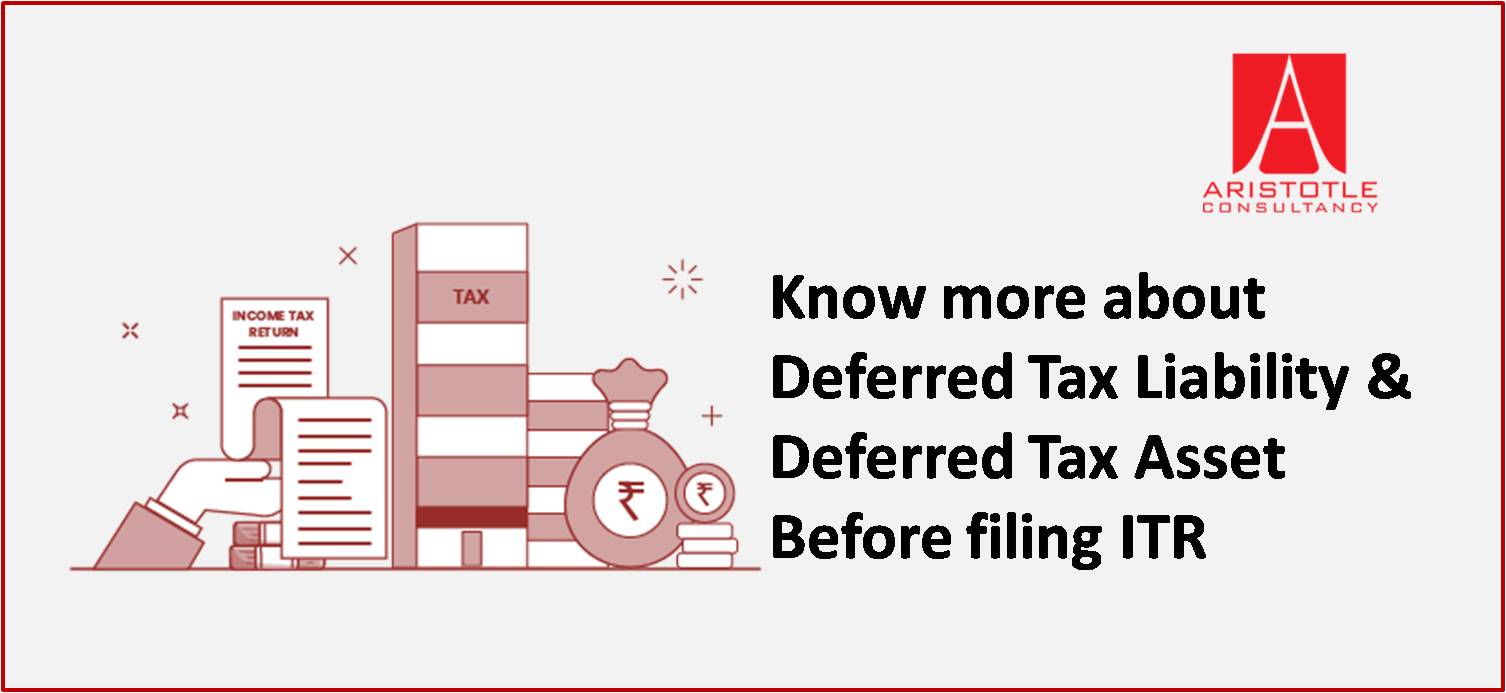Before filing ITR for AY 2021-22, it is important to know about Deferred Tax Liability and Deferred Tax Asset. Here, we will cover various information related to same.
(i) Meaning of Deferred Tax-The tax effect which arises due to the timing differences is known as deferred tax. Deferred tax is recognized on the basis of all timing differences. There are two types of timing differences – Temporary and Permanent.
(ii) Meaning of Timing Difference – Company calculates the amount of which are book profits from the financial statements prepared in the accordance with the rules of the Companies Act 2013 and it also calculates its taxable profit on the basis of the provision of the Income Tax Act 1961. Due to certain items, there is a difference that arises between the book profit and taxable profit because these items are allowed or disallowed each year for the calculation of tax. This difference that arises between the book and the taxable income is known as the timing difference. There are 2 types of timing differences-
Permanent Timing Difference – Permanent Timing Differences mean the difference which arises between book income and taxable income and which is not reversible in the subsequent period. Such a type of difference is permanent in nature.
Temporary Timing Difference – Temporary Timing Differences mean the difference which arises between book income and taxable income and which is reversible in the subsequent period. Such a type of difference is temporary in nature.
In the summarised form, the differences which are reversible in the near future will be considered as temporary timing differences, and which are not reversible in the near future will be considered as permanent timing differences.
Due to these timing differences, the deferred tax assets and deferred tax liability arises.
(iii) Meaning of Deferred Tax Assets and Deferred Tax Liability– Deferred tax assets arise when the amount of the tax has been paid or has been carried forward but it has still not been recognized in the statement of income of the entity. The amount of deferred tax assets is calculated by taking the difference between the book income and the taxable income.
There are certain conditions that cause the origin of the deferred tax assets. These conditions are as follow-
(a) The tax authority takes the expenses into account much before time.
(b) The tax on the revenue earned is levied before time.
(c) There is a difference in tax rules for assets and liabilities.
Example of Deferred Tax Assets– the book profit of the entity is 2000 and it includes the amount of bad debts of Rs.200.
For the calculation of tax profit, the amount of bad debts will be allowed in the future when it will actually be written off then the taxable income after this disallowance will be Rs. 2200 and income tax rate is 30% then the entity will pay taxes on Rs. 2200 i.e. (2200*30%) Rs. 660.
If the amount of bad debt (200) was not disallowed then the entity would have paid tax on Rs. 2000 amounting to Rs 600 i.e 2000*30%. For the additional Rs. 60 which is already paid, we have to create DTA. Entry for recording the DTA is as follow-
Deferred Tax Assets a/c Dr. 60
To Deferred Tax Expenses 60
(Being Deferred Tax Assets booked in the books of the entity)
Deferred Tax Liability– Deferred tax liability arises when there is a difference that arises between what a company can deduct as tax and the tax that is there for accounting purposes. A deferred tax liability signifies that a company may in the future pay more income tax because of a transaction in the present.
The conditions that cause the origin of deferred tax liability are as follows:
(a) When a company keeps more than one copy of the financial statement, for their own personal use or for furnishing the same to tax authorities. This is called dual accounting.
(b) In order to showcase the higher amount of profits to the shareholders or members of the company due to this the companies often push their profits.
(c) Sometimes companies want to push the current profits into the future, due to this there is a decrease in the tax amount.
Example of Deferred Tax Liability– When the rate of the depreciation as per the Income tax act is higher than the rate of depreciation as per the Companies Act (generally in the initial years), the entity will end up paying less tax for the current period. This will create deferred tax liability in the books and the entity will pass the following accounting entry-
Deferred Tax Expenses a/c Dr.
To Deferred Tax Liability
(Being Deferred Tax Liability booked in the books of entity)






